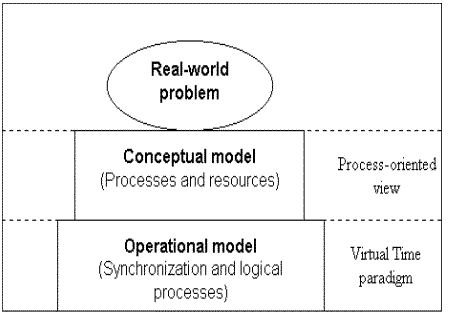
© National University of Singapore. All rights reserved.
| Simulator Template |
Contents1. Modeling Views
In every simulation, the simulationist has to first model the entities in the real world problems as a conceptual model. The conceptual model is then translated into a simulation program for execution. Therefore, an appropriate modeling framework is needed to develop and implement a simulation model. The modeling framework, also called world view, is an underlying structure and organization of ideas that form the outline and basis on which a simulationist is to build the simulation model. In the sequential mode of simulation, there are three main modeling views: event scheduling, activity scanning and process interaction.
SPaDES/Java
adopts a modified process-interaction
modeling view called process-oriented
modeling view. Here, entities
in the real world are viewed as a set of processes each encapsulating its
own state and behaviour, and processes interact with one another through
message passing. Furthermore,
it is necessary for a process-oriented model to be mapped to an
operational model that is able to execute the simulation logic correctly
and efficiently. The
operational model of SPaDES/Java is based on the Virtual
Time Paradigm described above. Figure
1.1 below illustrates this concept.
 Figure 1.1 - Process-oriented modeling view
|
| Syntax Summary | |
| Sample Programs | |
| Sample Output | |
| Performance | |